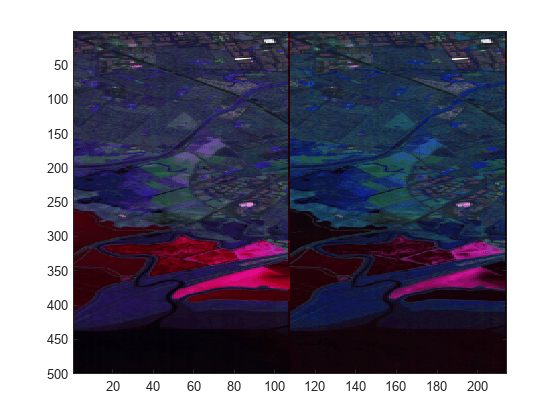fastInScene
Perform fast in-scene atmospheric correction
Description
newspcube = fastInScene(spcube)
The fast in-scene method gives best correction results, if the spectral data
is radiometrically calibrated
is uniformly illuminated
does not contain large water bodies, cloud, or cloud shadows
contain adequate dark pixels for approximately computing the baseline spectrum
contain heterogeneous regions that include soil, water, vegetation, and man-made structures. The method assumes that the mean reflectance spectrum of different endmember spectra are scene-independent.
Note
This function requires the Hyperspectral Imaging Library for Image Processing Toolbox™. You can install the Hyperspectral Imaging Library for Image Processing Toolbox from Add-On Explorer. For more information about installing add-ons, see Get and Manage Add-Ons.
The Hyperspectral Imaging Library for Image Processing Toolbox requires desktop MATLAB®, as MATLAB Online™ and MATLAB Mobile™ do not support the library.
Examples
Input Arguments
Output Arguments
Limitations
This function does not
support parfor loops, as its performance is already
optimized. (since R2023a)
References
[1] Bernstein, L.S., S.M. Adler-Golden, R.L. Sundberg, R.Y. Levine, T.C. Perkins, A. Berk, A.J. Ratkowski, G. Felde, and M.L. Hoke. “A New Method for Atmospheric Correction and Aerosol Optical Property Retrieval for VIS-SWIR Multi- and Hyperspectral Imaging Sensors: QUAC (QUick Atmospheric Correction).” In Proceedings. 2005 IEEE International Geoscience and Remote Sensing Symposium, 2005. IGARSS ’05., 5:3549–52. Seoul, Korea: IEEE, 2005. https://doi.org/10.1109/IGARSS.2005.1526613.
